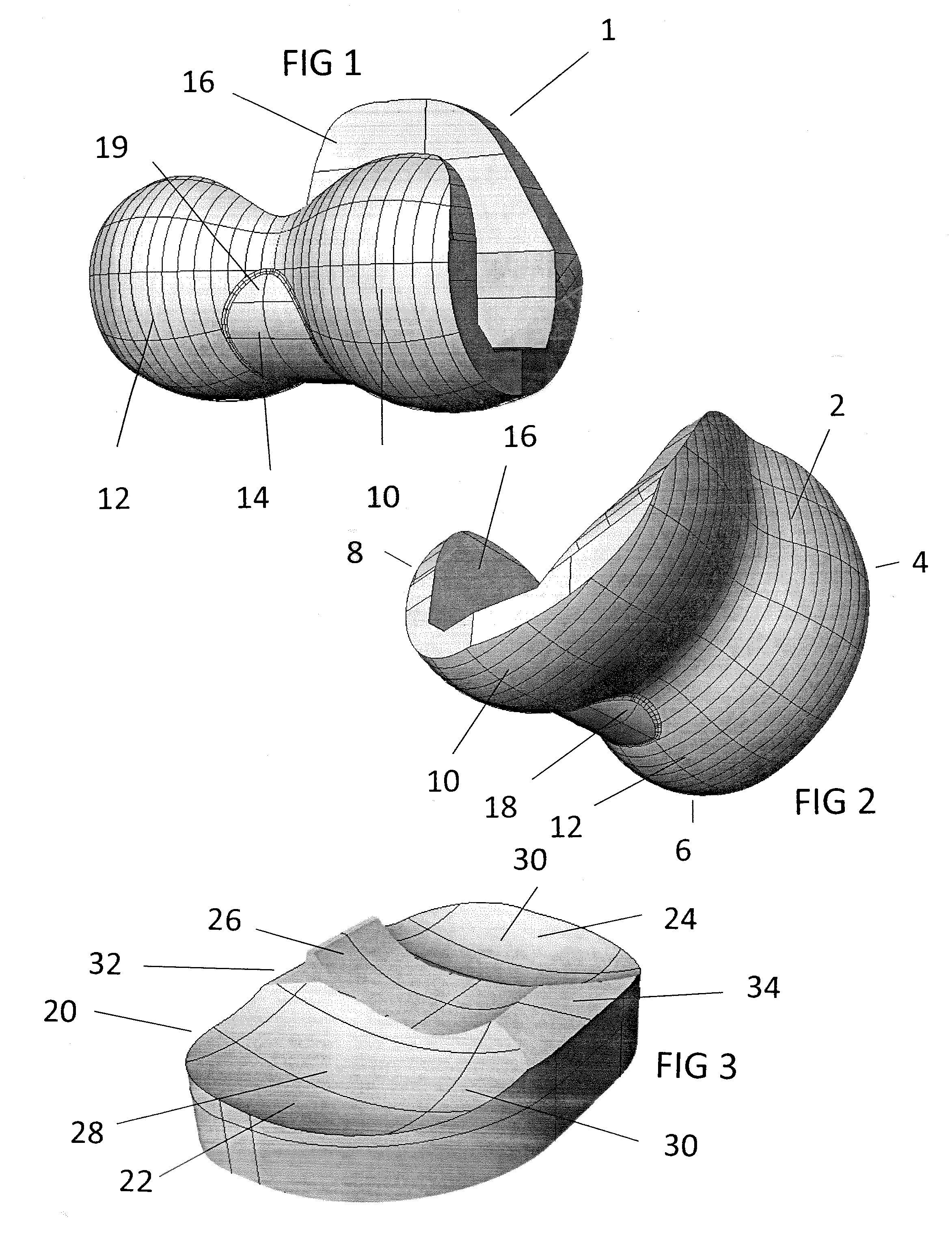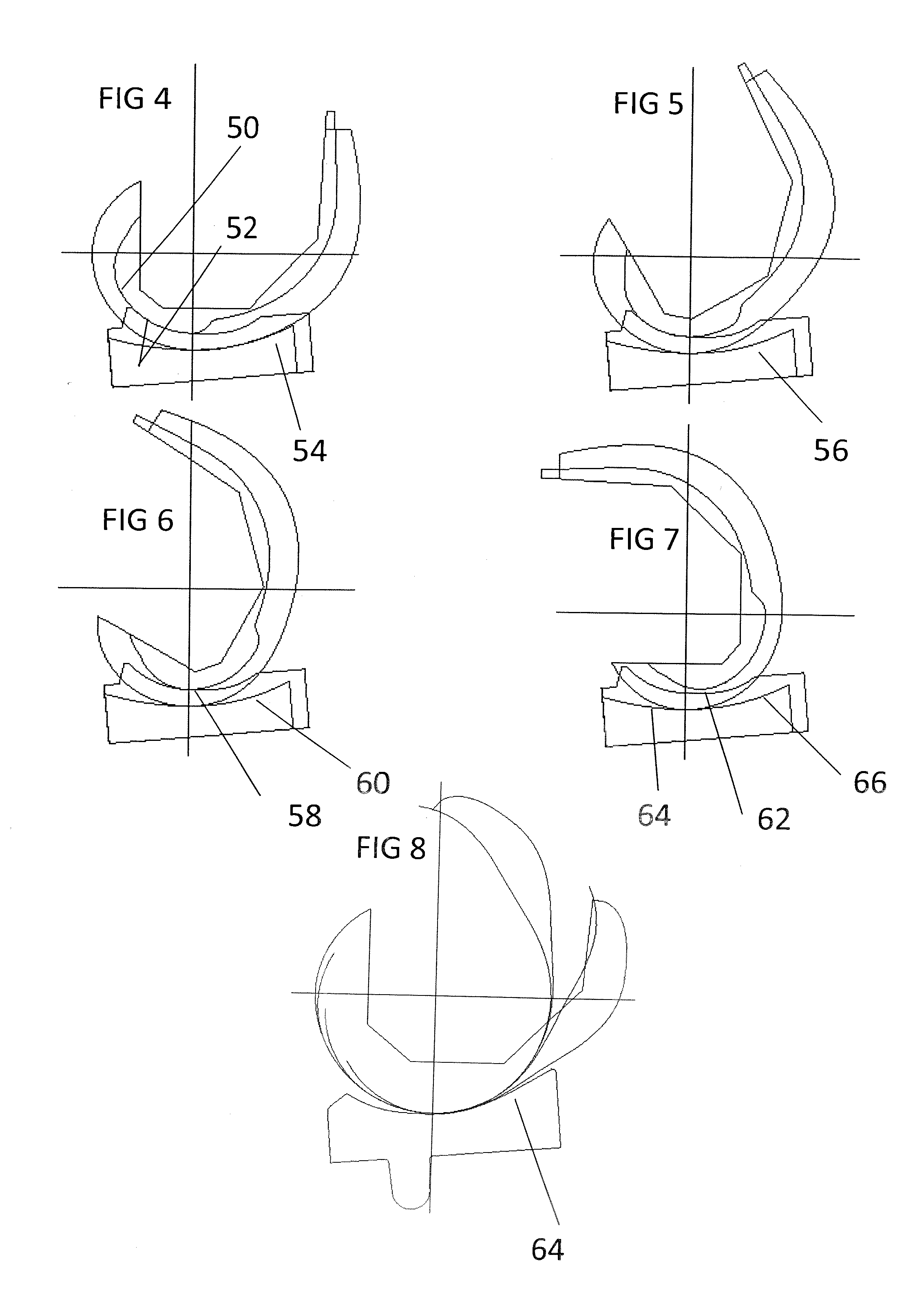Total knee replacement substituting function of anterior cruciate ligament
a technology of anterior cruciate ligaments and knee replacements, applied in the field of prosthetic knees, can solve the problems of difficult to achieve with bearing surfaces alone, difficult to replicate the constraints provided by these ligaments, and more difficult to achieve. , to achieve the effect of reducing anterior-posterior displacement, enhancing the function of the basic design, and preventing excessive anterior displacement of the femur
- Summary
- Abstract
- Description
- Claims
- Application Information
AI Technical Summary
Benefits of technology
Problems solved by technology
Method used
Image
Examples
Embodiment Construction
[0018]In an embodiment, as shown in FIGS. 1, 2, and 3, the femoral component 1 comprises an anterior portion 2, a distal portion 6, and a posterior portion 8. The anterior portion 2 is called the patella flange 4 along which the patella (not shown) slides during flexion-extension. The lateral femoral condyle 12 and the medial femoral condyle 10 are biconvex surfaces which locate against their corresponding tibial condylar bearing surfaces 24 and 22. The interior surface of the femoral component 16 comprises facets that are typically used to interface against the prepared surface of the distal femur. A femoral intercondylar bearing surface 14 is located between the femoral condyles 10 and 12 and extends from a distal location 18 to a posterior location 19. The outer radius of the femoral intercondylar bearing surface seen in the sagittal view, from the lateral or medial sides, is smaller than that of the lateral 12 and medial 10 femoral condyles. The distal region of the intercondyla...
PUM
 Login to View More
Login to View More Abstract
Description
Claims
Application Information
 Login to View More
Login to View More - R&D
- Intellectual Property
- Life Sciences
- Materials
- Tech Scout
- Unparalleled Data Quality
- Higher Quality Content
- 60% Fewer Hallucinations
Browse by: Latest US Patents, China's latest patents, Technical Efficacy Thesaurus, Application Domain, Technology Topic, Popular Technical Reports.
© 2025 PatSnap. All rights reserved.Legal|Privacy policy|Modern Slavery Act Transparency Statement|Sitemap|About US| Contact US: help@patsnap.com



